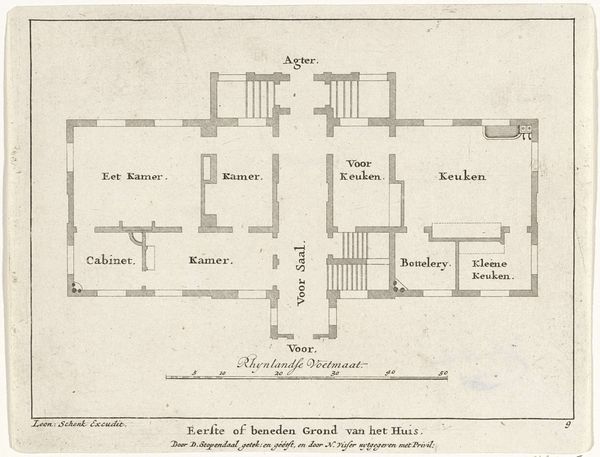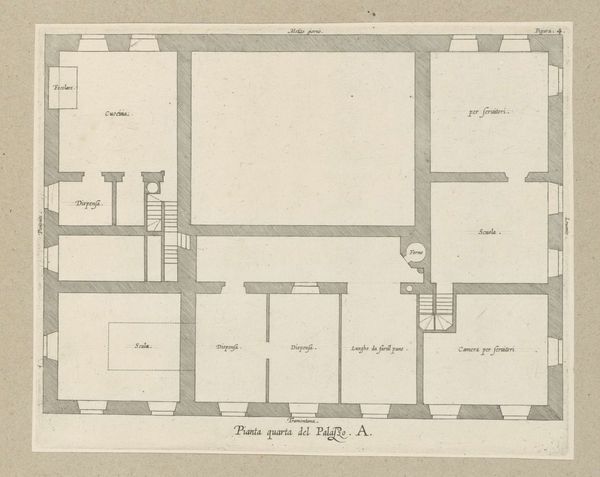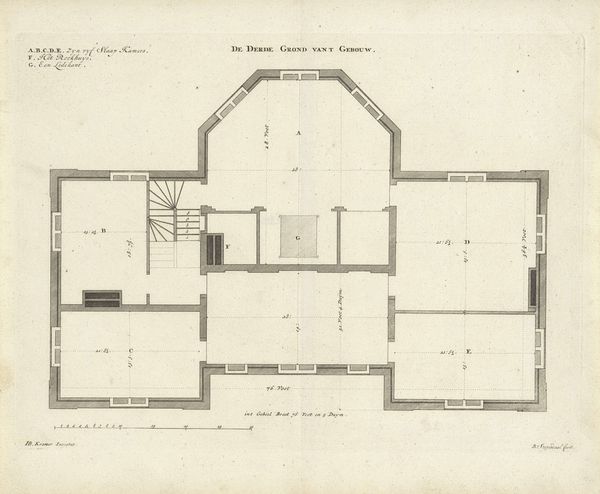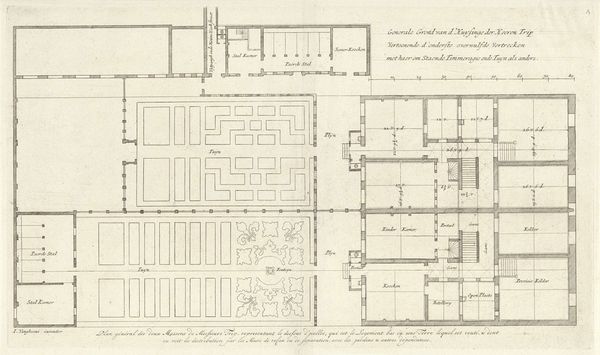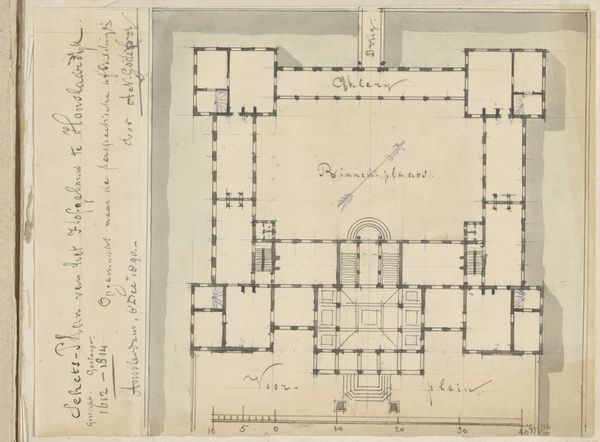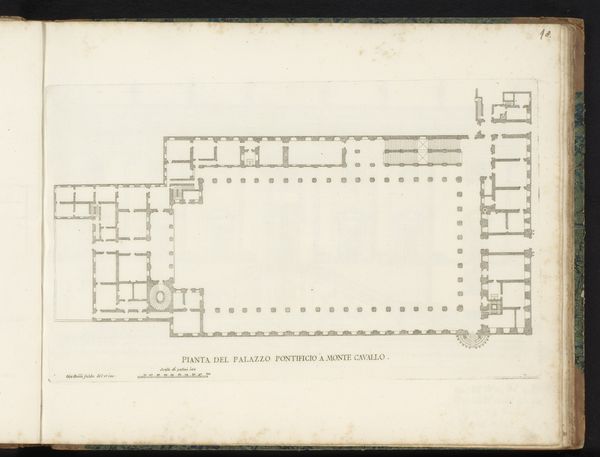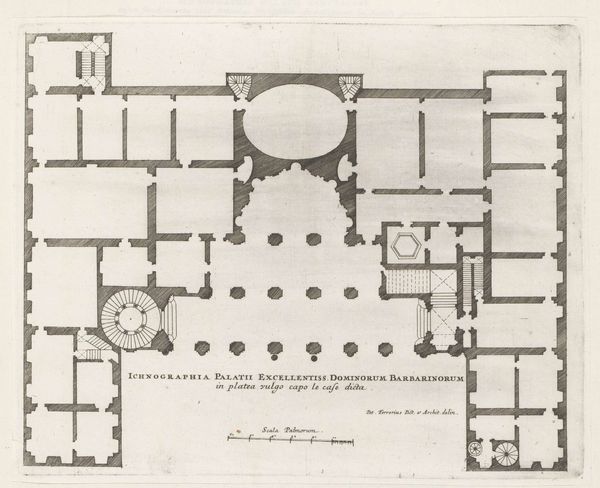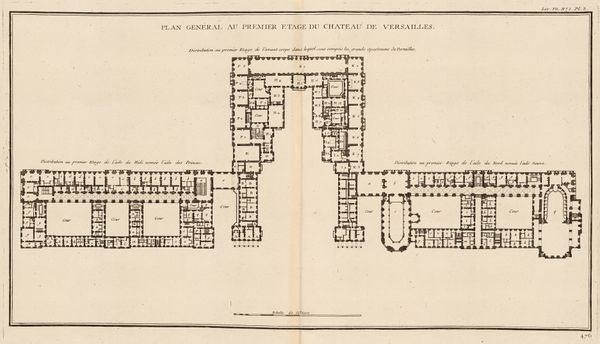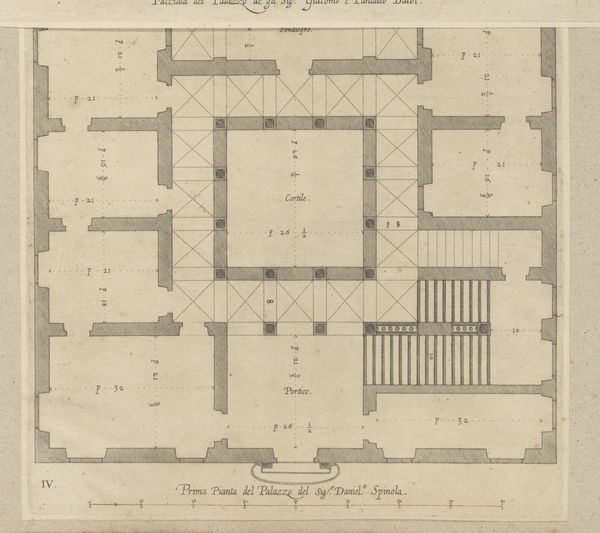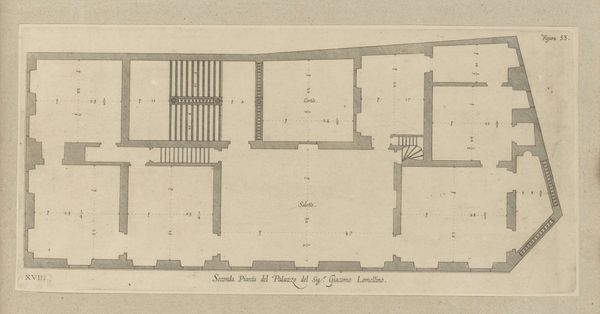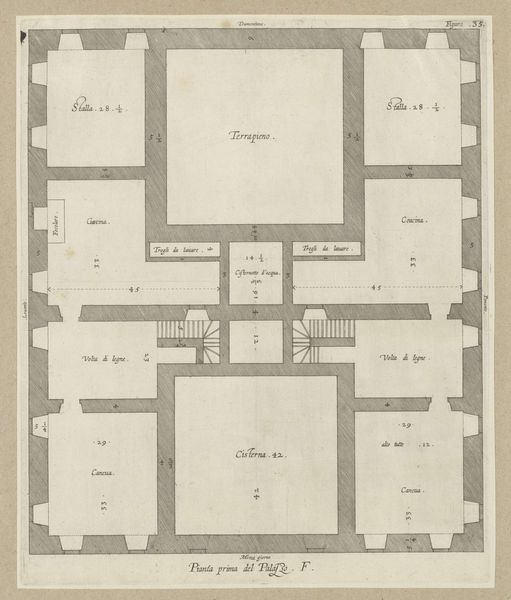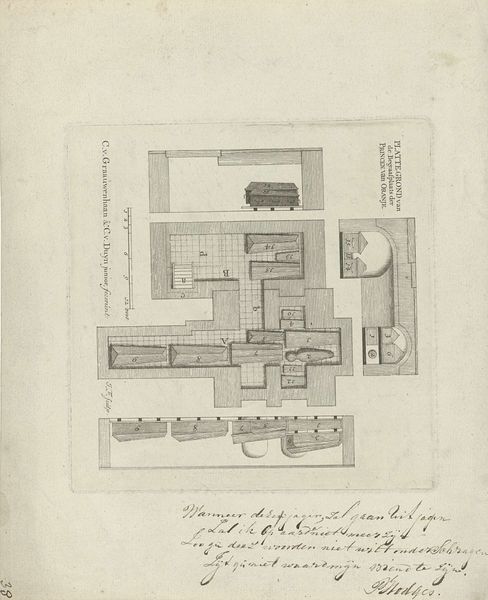
Plattegrond van de tweede verdieping van Huis Clingendael Possibly 1682 - 1746
0:00
0:00
drawing, print, etching, paper, ink, architecture
#
drawing
# print
#
etching
#
paper
#
ink
#
architecture
Dimensions: height 128 mm, width 171 mm
Copyright: Rijks Museum: Open Domain
Editor: Here we have a floor plan, “Plattegrond van de tweede verdieping van Huis Clingendael,” made with etching, drawing and ink on paper. It might have been created anywhere between 1682 and 1746. The artist is Daniël Stopendaal. I am intrigued by how detailed this floor plan is. I wonder, what can we interpret from looking at an architectural plan as a work of art? Curator: Well, architectural drawings like this offer fascinating insight into the social and political life of the period. Think about it - the way space is allocated, the sizes of rooms, and their relationships to each other all speak to power structures within a household, and the wider society. Consider, for instance, the placement of the "Saal," or hall. It dominates the plan, doesn't it? What does that suggest to you? Editor: It’s the biggest room… so it must be where everyone gathers and where the fancy things are… Does the existence of multiple “cabinets” reflect private studies, where wealth and intellect could be cultivated away from the eyes of the uninvited? Curator: Precisely. These cabinets indicate private, often gendered, spaces for study or personal reflection, suggesting the inhabitants valued intellectual pursuits or the appearance thereof. The separation of space wasn't merely practical; it was performative, communicating status and reinforcing social hierarchies. Think also about how such a plan would have been used. Editor: Probably as a visual claim of ownership and authority over this domain? Almost as a souvenir. Curator: Yes! The ability to commission and own such a plan becomes a marker of status and belonging, a visualization of one’s place in the world. These are inherently political images as much as practical tools. Editor: I see what you mean! It’s amazing how much this seemingly simple drawing tells us about society and power at the time. I definitely learned something new today.
Comments
No comments
Be the first to comment and join the conversation on the ultimate creative platform.
